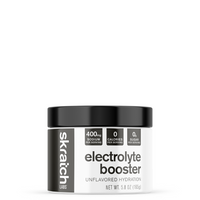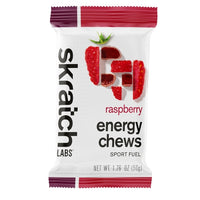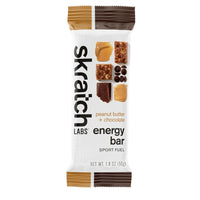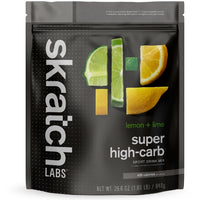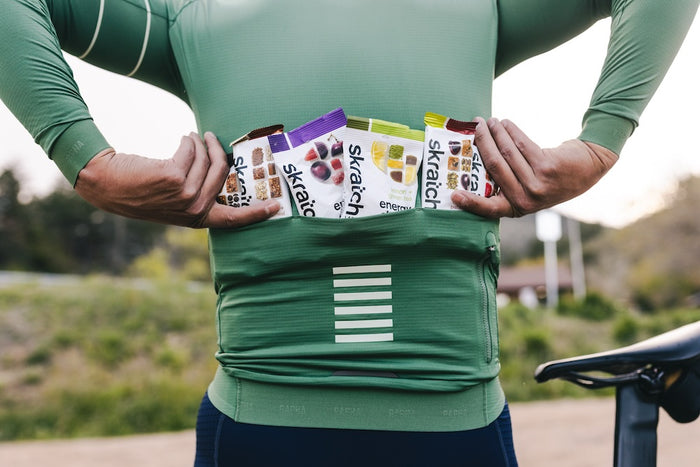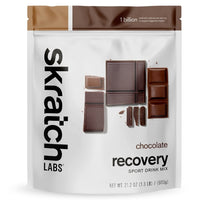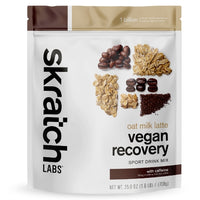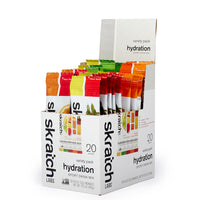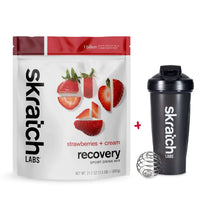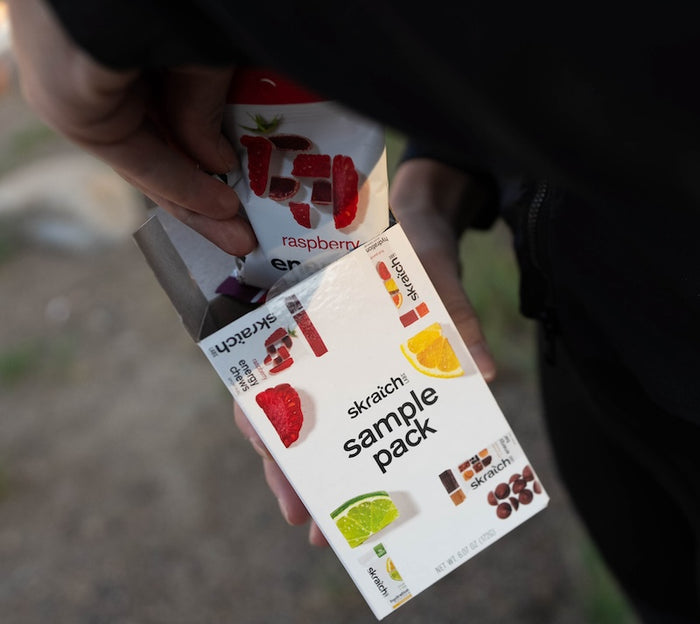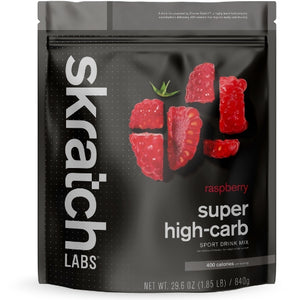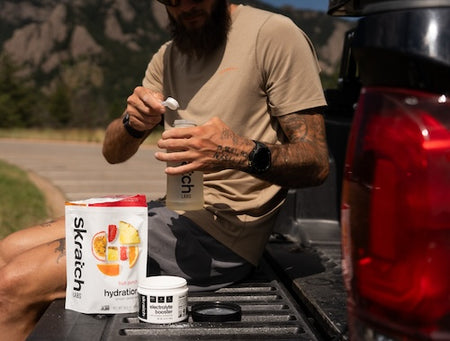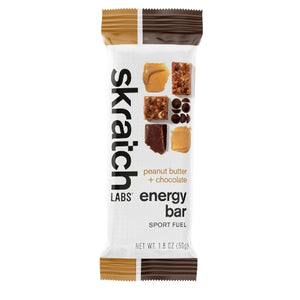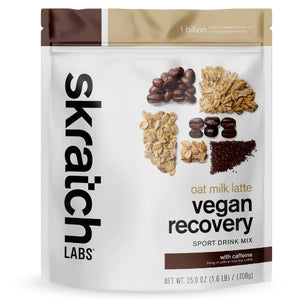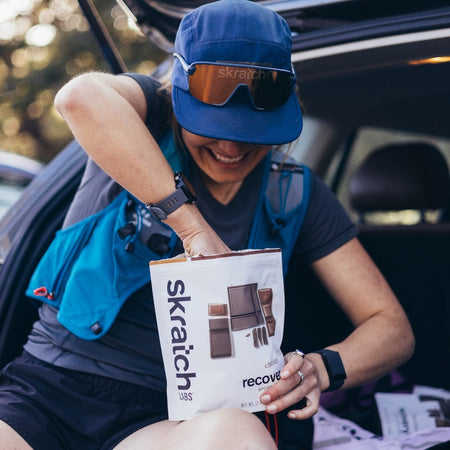It is well established that nutrition is an important aspect of exercise recovery. For many athletes, being told how to fuel for recovery may be enough. Yet, for the exercise aficionados out there, you may be curious about why nutrition is paramount for recovery as well as the physiological mechanisms underlying the necessity of recovery.
ATP- Chemical Energy Converted to Work
All physiological work requires a chemical energy input. Think of this as a type of biological currency- given a molecule with a high energy bond, your body can “buy” muscle contractions, cell clean-up and turnover, food breakdown, and more. Opposed to the roughly 180 pecuniary currencies on planet earth, your body has made it simple trading one, universally accepted chemical currency: ATP. The P in ATP stands for phosphate, and it turns out that ripping phosphate off of ATP gives the cell (and system) a ton of energy to work with in order to digest your food, keep your heart beating, carry you up a mountain, or read this page.
There is a finite amount of ATP at any given moment within the body, and cells are constantly working to create more. Luckily, macronutrients (carbohydrates, fats, and proteins) can all be stored as reservoirs for ATP synthesis in a pinch. This means that during a tough bout of exercise, your body can generate energy for muscle contraction, respiration, and quickening heart rate from the food you eat, and have eaten (10, 16).
Exercise is Depleting and Stressful
No, really. It is. The human body works extremely hard to keep internal conditions within a normal range; this is called homeostasis. Body temperature, heart rate, circulating hormones, blood sugar, and so on are all very tightly regulated to sit within their homeostatic range. Like a cyclone, exercise throws everything out of whack– altering hormone levels, increasing body temperature, changing blood pH, using up energy stores, and introducing small tears to muscles. Long term exercise (as seen in Ultramarathons) and exercise in severe heat have also been shown to be a source of endotoxemia- the presence of toxic lipopolysaccharides in the bloodstream causing inflammation, GI disturbance, and fatigue (2,6). The aforementioned homeostatic disruptions coupled with exhaustion of macronutrient stores such as glycogen render exercise a very stressful experience (6, 10, 11).
Unlike the stress you feel sitting in rush hour traffic, however, there may be some benefit here. Hormesis refers to any acute stressful event that leads to adaptation. Colloquially, what does not kill you makes you stronger. However, in order to maximize adaptation, you must rest and replenish nutrients so that repeated stress does not chronically disrupt the homeostasis of the system and lead to overtraining syndrome (18).
While there are full textbooks explaining the changes occurring during exercise varying across modalities, generally, glycogen depletion, delayed onset muscle soreness (DOMS), and increased sympathetic activity all majorly contribute to the need for post-exercise recovery.
Glycogen Depletion and Resynthesis
Glycogen is the molecule used to store glucose in both the liver and muscle to be used for ATP synthesis and cellular work. It has been well documented that enhancing muscle glycogen stores leads to better performance and increased time to exhaustion (10, 12-16). The capability of skeletal muscles to exercise is significantly impaired when glycogen stores are reduced to a certain level (16). This is likely because glycogen in the muscle can be quickly converted to energy regardless of the presence of oxygen, rendering muscle glycogen the primary fuel source at high intensities. Similarly, glycogen in the liver can be broken down to glucose and exported to the blood to provide energy to working tissues. These fuel reserves have evolved to sustain energy and physical capability through long periods of food restriction. In fact, from the time you finish dinner to the morning, much of your liver glycogen has been depleted just keeping you alive. Exercise, then, further depletes glycogen stores. The common experience of “bonking” or “hitting the wall” usually corresponds to your body having used up all of its glycogen- the preferred fuel source (10).
Without proper recovery, glycogen stores will become progressively smaller, and lead to performance decrements. Nutrition and time are two important factors involved in glycogen resynthesis. In order to nutritionally replenish glycogen, large amounts of carbohydrate (1.0-1.85 g/kg/h) should be consumed following exercise (15). A process mainly dependent upon insulin signaling, glycogen replenishment begins immediately following exercise and can continue for many hours. It is therefore important to keep insulin levels elevated via continued consumption of carbohydrate rich sources in the day following a glycogen depleting intensive activity. Additionally, it can be beneficial to combine carbohydrates with amino acids to augment the insulin response and therefore glycogen storage (jeukendrup and). Interestingly, eccentric contractions (where force is being produced but the muscle is lengthening; think downhill running, the downward movement of a squat, or the downward motion of a push-up) have been shown to impair muscle glycogen resynthesis following exercise (7,8). These data suggest that depending on the type of exercise, prolonged recovery is required for continued performance. It is also important to note that active recovery has been shown to blunt glycogen synthesis as compared to passive recovery (1). In concert, these data indicate a need for rest and nutrition to maximize post-exercise glycogen replenishment.

Delayed Onset Muscle Soreness
DOMS is classified as a muscle strain following unfamiliar high work outputs or eccentric contractions. While the cause of DOMS is not yet fully understood, it is postulated to be multifactorial, with inputs from muscle damage, inflammation, reduced enzyme function, and glycogen depletion (4,5). DOMS is a common phenomenon in athletes, especially engaging in back-to-back training sessions. While many athletes believe they are able to push through the pain, DOMS can impair strength and power, reduce the biomechanical efficiency of joints, and lead to poor coordination and injury (1).
Training without adequate recovery can increase the prevalence of DOMS. To avoid or treat DOMS, a combination of nutrition and other recovery modalities are required. Similar to how post-exercise carbohydrate intake enhances glycogen synthesis, eating carbohydrates following exercise can enhance protein synthesis and muscle repair. A similar effect is observed when consuming amino acids following an effort (13). Additionally, massage has been shown to alleviate feelings of soreness. Similarly, wielding compression during and after exercise has also been shown to be effective in reducing muscle soreness and edema (1,4,5). It should be noted that there is no data supporting the benefit of cryotherapy or hyperbaric oxygen therapy for muscle recovery. In fact, cold exposure or cryotherapy directly following exercise has been shown to significantly blunt post-exercise genetic adaptations related to muscle hypertrophy (3).
Sympathetic Activity
The autonomic nervous system (ANS) controls functions that are mainly subconscious– including heart rate, respiration, digestion, blood vessel dilation, and so on. There are two branches to the ANS that generally have antagonistic functions: the Parasympathetic (rest and digest) and Sympathetic (fight or flight) branches. When you exercise, the parasympathetic branch of the ANS allows the sympathetic branch to take the wheel. This causes an increase in heart rate and breath rate, a spike in epinephrine and norepinephrine (also known as adrenaline and its related molecule), and a decrease in heart rate variability (HRV) (18). These changes are extremely advantageous when in an exercise state to deliver blood away from inactive tissues to hard-working muscles, supply the body with oxygen, and meet metabolic demands.
Following exercise, your body maintains an increased respiratory rate, heart rate, and elevated epinephrine and norepinephrine levels for some time. It has been repeatedly demonstrated that training without sufficient rest leads to prolonged activation of the sympathetic nervous system (8,14,17,18). This prolonged activation of the sympathetic nervous system has been implicated in cardiovascular disease, anxiety and depression, and poor exercise performance (9). At this point, there is no mechanism to homeostatically modulate this ANS activity beyond simple rest. For example, exercise modalities of longer duration require more time to recover parasympathetic indices than exercises of shorter duration, despite similar maximum heart rate achievements in both activities (17). While it is clear that in order to achieve optimal ANS balance, sufficient rest and recovery is required following exercise. Because the digestion of food is a function of the parasympathetic nervous system, it could be postulated that nutritional intervention in cahoots with inactive recovery are both mechanisms for stabilizing the ANS.
Consolidating and Recovering from the Aforementioned
Recovery is not only an important concept in theory; the physiology of exercise points to its necessity. Nutrition and rest are both important mechanisms to achieving optimal recovery. When we exercise, we use up ATP and glycogen, damage muscles, and activate sympathetic nervous activity. These changes all require time and nurturing to return to a homeostatic baseline, thus yielding the physiological rationale of sweet recovery.
For some of our recovery tips check out 5 Tips for Better Recovery
References:





